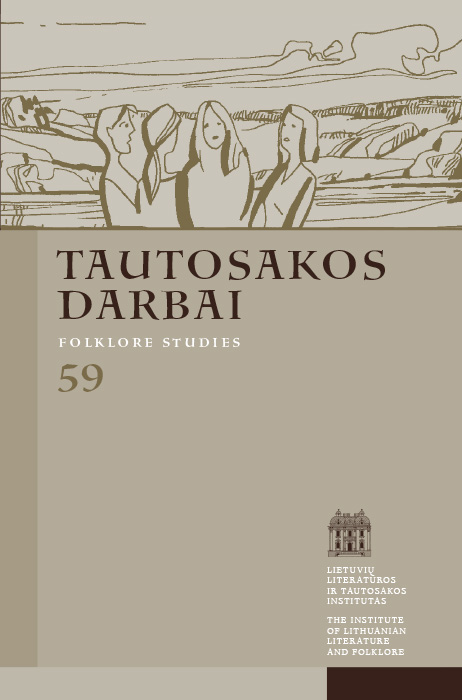Singing the Other: Singing in Two Languages and Code-Switching / Stitching
Abstract
This article discusses the switching of language codes and the influence of such switching on the community. The first part deals with the question of how the use of macaronic songs and switching between languages relates to the Other. By creating hybridity within the songs, macaronic songs can establish either a dialogue between two different cultures or aspirational domination of one over the other. The latter is typical of environments where the majority dominates the minority. We can say that this is a manipulation of two languages and words i.e. “code-switching” or “code-stitching”. This process can be a sign of multiculturalism, or colonization. The second part of the article addresses the question of whether the use of particular language code (e.g. a dialect or a supra-dialect) in songs and speech actually governs identification with the community. The choice of a language code always depends on the social setting in which the bearers themselves live. The collective consciousness of a local community stems from their identification with the local level through dialect (conversation, memories), whereas group consciousness on the national scale stems from identification with that level through supra-dialect: singing songs. I emphasize that both questions reveal communication with the Other or Others, with singers, researchers, and cultures.
Downloads
Most read articles in this journal
- Modesta Liugaitė-Černiauskienė, Jurga Sivickaitė-Sadauskienė, Pratarmė , Tautosakos darbai: Vol. 65 (2023): Tautosakos darbai
- Bronė Stundžienė, Regarding Expressions of Landscape in Folksongs , Tautosakos darbai: Vol. 47 (2014)
- Baiba Krogzeme-Mosgorda, Songs About Social Classes and Their Presentation in Two Largest Latvian Folksong Editions , Tautosakos darbai: Vol. 59 (2020)
- Aušra Žičkienė, Raudų tyrėjų konferencija Helsinkyje , Tautosakos darbai: Vol. 65 (2023): Tautosakos darbai
- Živilė Ramoškaitė, Bronė Stundžienė, Looking at the Horizons of Folksong Research. Živilė Ramoškaitė interviewing Bronė Stundžienė , Tautosakos darbai: Vol. 64 (2022)
- Greta Paskočiumaitė, Narrative of the Anti-Soviet Partisan War: a Family Case , Tautosakos darbai: Vol. 63 (2022)
- Lina Būgienė, About Grandma and Other Things , Tautosakos darbai: Vol. 64 (2022)
- Lina Būgienė, Witchcraft in the Lithuanian Village Community in the Beginning of the 21st Century (on the Folklore Fieldwork Material) , Tautosakos darbai: Vol. 66 (2023): Tautosakos darbai
- Giedrė Šmitienė, Interspecies Experience of Illness. Anthropological Approach to Several Texts by Janina Degutytė , Tautosakos darbai: Vol. 64 (2022)
- Jurga Jonutytė, Letter as Subject for Anthropological Research , Tautosakos darbai: Vol. 66 (2023): Tautosakos darbai




